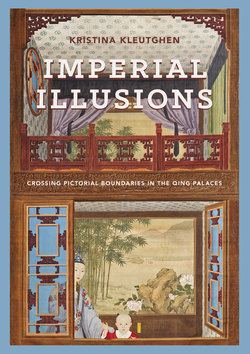Читать книгу Imperial Illusions - Kristina Kleutghen - Страница 86
На сайте Литреса книга снята с продажи.
Оглавление2.7Diagram depicting a ewer, known as a “flower waterer.” From Nian Xiyao, The Study of Vision. The Bodleian Libraries, University of Oxford, Douce Chin. B. 2, p. 37r.
with a detailed eight-step explanation, Nian specifies the use of a compass to describe a series of hemispheres in order to transform blocking squares into the rounded forms of a seemingly three-dimensional vase. Despite his explicit use of precise angles, implicit knowledge of geometry, and technical drawing tools in this process, methods that he further applies in the three pages on the construction of a rectangular box that conclude this section, he never mentions the mathematics underlying the images. Instead, he focuses on the forms that he hopes will result from the illustrations. In this section Nian seems have taken specific advantage of Jingdezhen porcelains, such as a “flower waterer” ewer (huaqiao, figure 2.7), to help him understand how objects could be represented in three dimensions. Several forms produced at Jingdezhen during the Yongzheng reign are illustrated here: flower-waterer ewers were produced both with and without handles in a form perhaps based on European or Islamic metalwork.56 Toward the end of the treatise, more ceramics based on known Yongzheng-era Jingdezhen products also appear, including the final study of a simple teapot (figure 2.8).57 Given the repeated presence of porcelain forms
